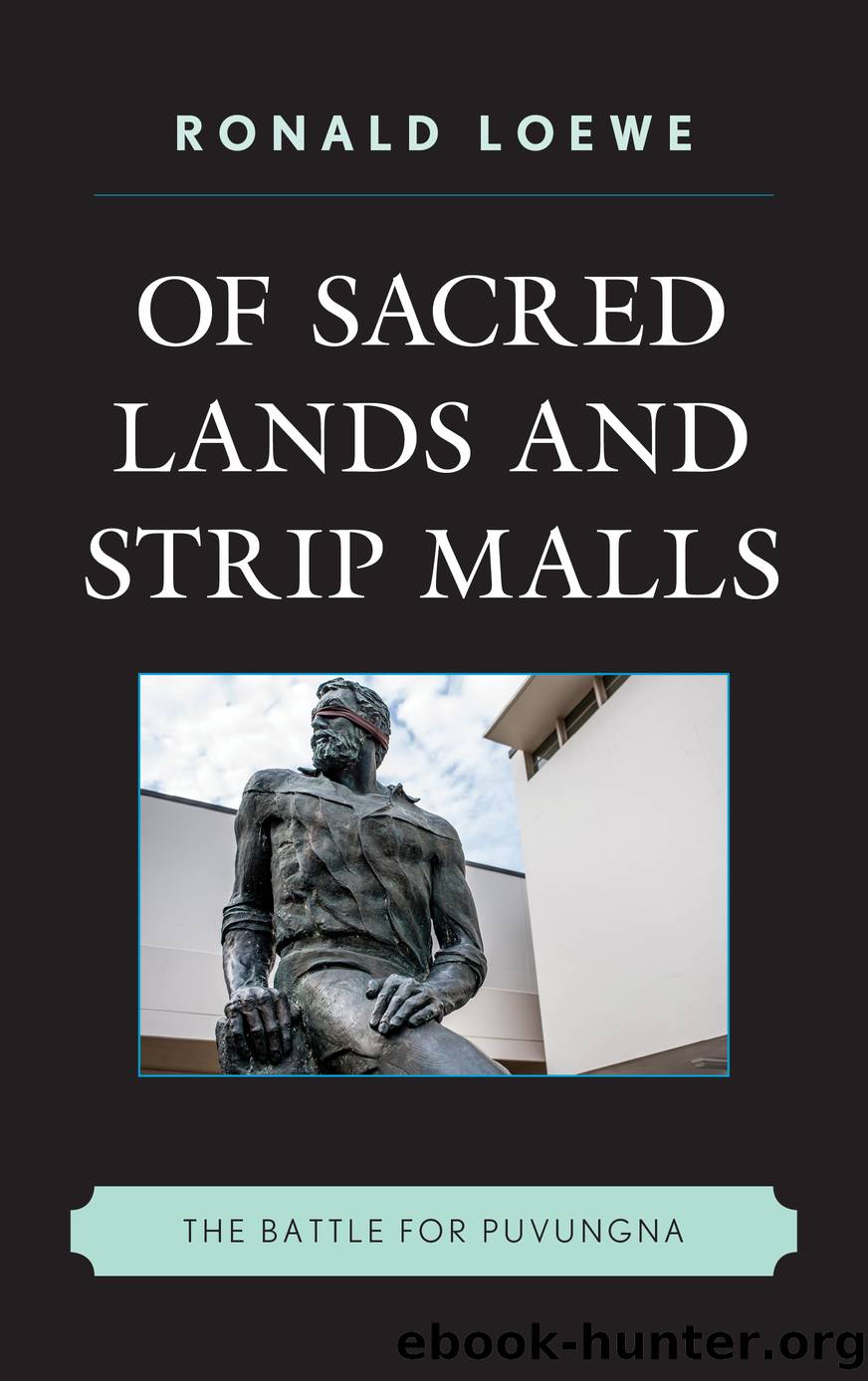Of Sacred Lands and Strip Malls by Loewe Ronald;

Author:Loewe, Ronald; [Loewe, Ronald]
Language: eng
Format: epub
Publisher: Rowman & Littlefield Unlimited Model
Published: 2016-08-15T00:00:00+00:00
6
The Academic Controversy
Where Is Puvungna, Anyway?
Puvungna is listed as a ânative rancheriaâ on the mission registers at San Gabriel and San Juan Capistrano, but determining its actual location has been a source of controversy. As in the case of the Tongva/Gabrielino creation story, the primary historical source is Father Gerónimo Boscanaâs Relación histórica de la creencia, usos, costumbres, y extravagancies de los Indios de esta Misión de S. Juan Capistrano, written around 1822. Here, Boscana mentions that Puvungna was located about eight leagues (or approximately twenty-one miles) northeast of Mission San Juan Capistrano. This would put the birthplace of Chinigchinich, or the site where he first appears, close to modern-day Lake Elsinore. However, because Boscana located Puvungna within the valley of Rancho de los Nietosâa land grant awarded to José Manuel Nieto in 1784 that is northwest of San Juan Capistranoâanthropologists and historians have long suspected that Boscana mistakenly wrote ânortheastâ instead of ânorthwest.â This point was made as early as 1918 by Jane Elizabeth Harnett, a Long Beach historian, and is worth quoting at length.
Now it is very evident that in describing the location of Sejet, Boscana has made a slight mistake, for, if it were on Rancho Los Nietos, it must have been northwest of San Juan Capistrano and not northeast as he declares. The point is rather important because he describes another Indian village, Pubuna [Puvungna] about which center all the legends of the San Juan [Capistrano] Indians concerning the origin of their god . . . as also being âdistant from San Juan Capistrano, northeast about 8 leagues.â Now Hugo Reid, writing 22 years later, tells us that at that time, there still existed on Rancho Los Alamitos (one of the subdivisions of Rancho Los Nietos), an Indian Rancheria named Pubugna. In view, first of Father Boscanaâs manifest error in stating the direction of Sejat; second, of the fact that Rancho Los Nietos was distant about eight leagues northwest (emphasis added) from San Juan [Capistrano], and, last, of the great similarity of the names Pubugna and Pubuna, it seems reasonable to believe that the two (Reidâs Pubugna and Boscanaâs Pubuna) are identical, in which case we may claim for this vicinity [Long Beach] the most interesting of all Rancherias between the mountain and the sea. (quoted in Case 1927, 26â27)
In short, by combining the available linguistic, geographical, and historical information, Harnett not only makes a compelling case for Rancho Los Alamitos (one-half mile west of CSULB) as the site of Puvungna but reconciles what would otherwise be divergent accounts by the journalist Hugo Reid and Father Boscana.
Harnettâs view was corroborated by John Peabody Harrington in 1933, although it appears the latter was not aware of Harnettâs work since he claims to have âdiscoveredâ the location of Puvungna. Harrington, like Harnett, was compelled to correct Boscanaâs error based on the fact that the Franciscan father had located Sejat (Puvungna) within the valley of Rancho de los Nietos. Harrington, however, provides two additional sources of evidence:
Download
This site does not store any files on its server. We only index and link to content provided by other sites. Please contact the content providers to delete copyright contents if any and email us, we'll remove relevant links or contents immediately.
| Anthropology | Archaeology |
| Philosophy | Politics & Government |
| Social Sciences | Sociology |
| Women's Studies |
Cecilia; Or, Memoirs of an Heiress — Volume 1 by Fanny Burney(32068)
Cecilia; Or, Memoirs of an Heiress — Volume 3 by Fanny Burney(31463)
Cecilia; Or, Memoirs of an Heiress — Volume 2 by Fanny Burney(31413)
The Great Music City by Andrea Baker(30794)
We're Going to Need More Wine by Gabrielle Union(18641)
All the Missing Girls by Megan Miranda(14767)
Pimp by Iceberg Slim(13787)
Bombshells: Glamour Girls of a Lifetime by Sullivan Steve(13692)
Fifty Shades Freed by E L James(12923)
Talking to Strangers by Malcolm Gladwell(12887)
Norse Mythology by Gaiman Neil(12847)
For the Love of Europe by Rick Steves(11544)
Crazy Rich Asians by Kevin Kwan(8894)
Mindhunter: Inside the FBI's Elite Serial Crime Unit by John E. Douglas & Mark Olshaker(8708)
The Lost Art of Listening by Michael P. Nichols(7169)
Enlightenment Now: The Case for Reason, Science, Humanism, and Progress by Steven Pinker(6878)
The Four Agreements by Don Miguel Ruiz(6324)
Bad Blood by John Carreyrou(6283)
Weapons of Math Destruction by Cathy O'Neil(5842)
